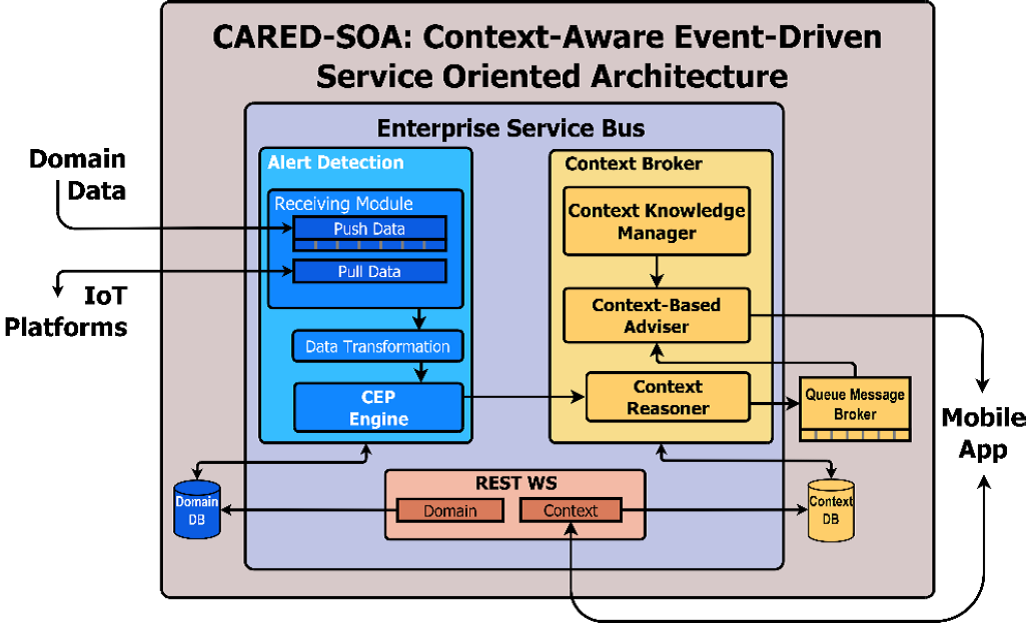A context-aware event-driven service-oriented architecture (ALFONSO GARCÍA DE PRADO and his team).
Context awareness has become a fundamental requirement for realizing people-centric IT applications. People leave their homes expecting the lights, which they left on, to be turned off automatically. The mobile phone can warn people if there is traffic congestion on the way to the office. Windscreen wipers automatically turn on if it is raining. If there is any possibility of a fire at home, hotel, or hospital, then sensors have to integrate with one another to do data fusion in time to facilitate any fire, flame, and fall detection. Our current IT services and systems are not typically context-aware. Every common, casual, and cheap item has to be self-, surroundings, and situation-aware in order to be unique in their decisions, deals, and deeds. Software packages, libraries, and suites have to be event-driven in order to be sensitive and responsive. They have to be designed and deployed in such a way that they are receptive to any kind of noteworthy events and to answer accordingly. We have discussed service-oriented and event-driven architectures. They need to be blended with the new-generation technologies, such as the IoT, in order to be right and relevant for the increasingly connected world.
The connected things, sensors, actuators, robots, drones, beacons, machines, equipment, instruments, wares, utensils, and other devices are to empower software services to be context-aware. There are IoT data analytics platforms, the growing array of different and distributed event sources, the faster maturity and stability of event processors, streaming analytics engines, scores of connectors, drivers and adapters, knowledge visualization dashboards, and other enabling frameworks, patterns, processes, practices, and products aimed towards producing context-aware applications across industry verticals.
The authors have devised with a high-level context-aware event-driven service-oriented architecture:

With the dawning of the game-changing IoT era, application and data architectures are set to be synchronized to create versatile architectures for various use cases.



